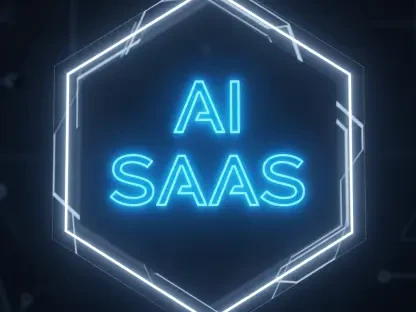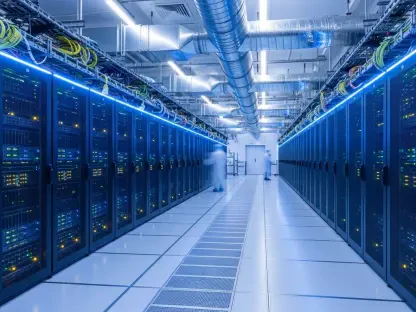In today’s fast-paced technological landscape, organizations are compelled to continuously evolve and adapt to new advancements, particularly in the realm of artificial intelligence. Alongside the significant benefits that AI brings, it poses unique challenges in maintaining technical excellence while ensuring robust security measures are in place. This article examines the critical interplay among regular training, timely security policy updates, and AI integration within development teams. A strategic balance among these elements is paramount to sustain organizational growth while fortifying security. As technology evolves, addressing these intertwined components, particularly during periods of expansion, ensures that teams remain secure and capable of adapting to future demands.
The Crucial Role of Continuous Training
Refresher Programs for Development Teams
In a constantly changing technological environment, refresher training has become an indispensable tool for maintaining a competitive edge. As development teams encounter advancements such as AI-powered code generation and automated debugging, the importance of regular skill updates cannot be overstated. Even experienced developers face obsolescence without the proper resources, leading to decreased productivity and an accumulation of technical debt. This approach not only reinforces existing knowledge but also introduces new technological concepts, ensuring that developers remain agile and competent.
To promote effective learning, personalized paths tailored to each individual’s needs have proven essential in maximizing training outcomes. Regular skill assessments and a diverse mix of learning formats, such as workshops, e-learning modules, and mentorship, cater to varied learning preferences. This structured approach encourages continuous professional growth, mitigating the risk of redundancy within development teams. As technologies evolve, personalized learning pathways allow developers to anticipate changes, adapting their skill sets to remain at the forefront of innovation.
Integrating Training with Technological Advancements
Aligning training initiatives with technological advancements requires a proactive approach that emphasizes anticipating future needs. Organizations should foster a culture of learning, encouraging participation in industry conferences, workshops, and webinars to expose teams to new ideas and trends. By staying informed and engaged with the latest developments, teams can identify opportunities for leveraging emerging technologies effectively. This integration fosters innovation, allowing organizations to remain at the cutting edge of industry practices.
Moreover, effective training programs should include real-world problem-solving exercises, enabling developers to apply newly acquired skills in practical scenarios. This hands-on approach enhances comprehension and retention, enabling team members to translate theoretical knowledge into actionable insights. Organizations that prioritize such immersive experiences find their teams better prepared to tackle evolving challenges and address complex problem domains. Consequently, continuous training initiatives bolster the capacity for innovation and ensure development teams can thrive in an ever-changing landscape.
Security Policies in a Dynamic Environment
Adapting Security Protocols to Emerging Threats
As technological landscapes shift, the dangers of static security policies become increasingly apparent. Organizations must remain vigilant in adapting their protocols to counter emerging threats effectively. Regular security reviews, conducted at intervals tailored to each industry’s risk profile, ensure the organization’s defenses are attuned to both internal changes and external challenges. For high-risk sectors, quarterly evaluations are recommended as a means of proactively mitigating vulnerabilities and maintaining a secure posture.
Updating security measures around access controls, code review requirements, and deployment protocols is critical for safeguarding sensitive information. As technology evolves, cyber threats become more sophisticated, necessitating a vigilant approach to addressing potential risks. Highlighting the criticality of these updates garners support across all levels of the organization, fostering a culture that prioritizes security as an integral aspect of growth. By embedding security considerations into everyday operations, organizations can reinforce technical resilience and ensure sustainable expansion.
Proactive Security Strategies in Development
Shifting security considerations earlier, or “left,” in the development process is a proactive strategy aimed at identifying vulnerabilities before production. This approach reduces remediation costs and minimizes disruptions, ultimately streamlining development workflows. Security automation within continuous integration and continuous deployment (CI/CD) pipelines is recommended to enhance identification capabilities. Automated mechanisms efficiently detect potential issues, allowing development teams to rectify them before they impact the final product.
Simultaneously, threat modeling sessions and regular security training help embed security considerations throughout the development lifecycle. These strategies empower team members to adopt a proactive stance in safeguarding the organization’s assets and reputation. Concurrently, AI governance policies clarify internal guidelines for AI tool usage, ensuring teams comprehend how and when to employ these powerful technologies responsibly. Aligning governance with security fosters integrated strategies that harness AI’s potential while safeguarding against misuse and vulnerabilities.
AI Integration and Policy Development
Harnessing AI for Innovation and Efficiency
The integration of AI technologies into development workflows offers significant opportunities to enhance efficiency and innovation. Proper management of AI’s inherent possibilities entails clear, well-defined usage guidelines. Organizations must embrace AI governance frameworks that establish ethical standards and usage boundaries, preventing misuse and unintentional harm. Ensuring that AI technologies align with organizational objectives and values fosters responsible innovation that maximizes potential while mitigating associated risks.
Implementing AI-driven solutions requires a collaborative effort involving cross-functional teams, including legal, compliance, and technical experts. By collaborating, organizations can holistically address AI implementation concerns, factoring in ethical considerations, privacy implications, and regulatory compliance. As AI continues to evolve, adaptive policy frameworks guide decision-making processes, instilling confidence that efforts remain aligned with overarching strategic goals. This collaborative approach facilitates innovation without forsaking security and compliance.
Developing Comprehensive Data Management Policies
Addressing the growing volume and sensitivity of data managed by development teams necessitates robust data management policies. Establishing a centralized strategy serves as a “single source of truth,” mitigating risks of unauthorized data copies and inadvertent disclosures. Such policies delineate data ownership, usage rights, sharing circumstances, and regulatory compliance requirements, embedding data integrity into the organization’s culture. Effective data management is thus both protective and enabling, facilitating informed decision-making and efficient data utilization.
Centralized data management not only safeguards sensitive information but also aligns organizational objectives with customer expectations. Preemptive alignment fosters trust and transparency, key elements for maintaining positive relationships with stakeholders. By creating a comprehensive approach to data management, organizations demonstrate a commitment to integrity and security. This approach streamlines operations, facilitating scaled development while ensuring quality and governance are upheld across all stages of growth.
Building a Resilient Future
Effective Strategies for Sustainable Growth
Balancing technological expansion with comprehensive security and training initiatives builds a resilient organizational framework. Leaders are encouraged to prioritize strategic investments in these key areas, recognizing the interdependence between training, security, and AI innovation for long-term success. As development teams grow, maintaining an agile and adaptable approach ensures they can navigate changing technological landscapes without compromising quality or security. By fostering a culture of adaptability, organizations position themselves for sustainable growth and industry leadership.
A commitment to continuous improvement enables organizations to harness technology’s full potential and sharpen their competitive edge. Emphasizing collaboration and communication across all levels of the organization fosters a unified vision, aligning teams with broader strategic goals. Regular feedback and performance evaluations further enhance development processes, providing valuable insights that drive innovation and excellence. Ultimately, by investing in these areas, organizations create an environment that promotes efficiency, agility, and security—paving the way for a promising, resilient future.
Actionable Insights for Leaders
In the ever-evolving world of technology, organizations today face the pressing need to keep pace with rapid advancements, especially in the field of artificial intelligence. While AI offers numerous benefits, it simultaneously introduces distinct challenges related to maintaining high technical standards and ensuring robust security protocols. This discussion delves into how regular training, timely updates to security policies, and seamless AI integration are crucial for development teams. Finding a strategic balance among these elements is vital for sustaining organizational progress while bolstering security frameworks. As technology continues to advance, focusing on these intertwined aspects, especially during times of growth, ensures that teams can securely adapt to future challenges. Organizations must prioritize ongoing education and agile policy modifications while embracing AI, making sure that their teams remain equipped to handle the evolving landscape. In this way, companies can secure their operations and stay competitive in a technologically progressive world.









